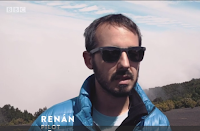How can we identify genre?
Conventions:
Narrative
and
Cinematography
Mise-en-scene (props costume, lighting, set, character performance) language, production techniques
(editing, camera angles and movement, structure, filters, effects, sound etc.)
Narrative structure (linear, non-linear, abstract, narrative, etc.)
Symbolic codes (e.g. a cowboy hat)
Action codes (body language, hand gestures etc.
Why is genre important?
For Producers of media texts:
It gives them a pattern for construction, a template,
genre pieces have an established audience who are easy to market to
certain personnel can develop their skills working within a particular genre (e.g. horror make up specialists)
Stars can associate themselves with certain genres e.g. Will Ferrell is known for a certain type of slapstick comedy, and his face on a poster instantly tells audiences what kind of movie they are likely to see if he is in it.
Fans of the genre know the codes, so you don't have to reinvent the wheel all the time, so you don't have explain everything the audience knows the codes
Distributers:
Clear channels for marketing and distribution - easily targetable audience
concentration of distribution resources - no point in trying to get football matches to a non-sports audience because they will not want to watch it.
Fans of a genre as a whole can easily be persuaded to buy other texts in the same genre e.g. action movies which provide a structure for the retail outlets like HMV, amazon etc.
Steve Neal
'genre is a repetition with an underlying pattern of variations' - he is saying that genre is something that gets repeated and repeated just with slight differences each time.
and
'difference is absolutely essential to the economy of genre'
Two ideas can be explored using this quote:
1. How you have used obvious codes, iconography and techniques that are evident in existing media texts that conform to the genre.
2. How you have made some subtle changes to these genre expectations (challenging the conventions?)
point: "Steve Neale suggests that genre is 'a repetition with an underlying pattern of variations'
evidence: What evidence do you have from your chosen piece of coursework that supports this?
[be specific and describe in detail]
Refer to professional examples that have inspired you; being specific.
Analysis: Why did you do this?
What was the purpose?
What was the effect of this on the audience?
Do you agree with Neale? Why?
Conclusion:
Using Steve Neale's ideas concerning genre I believe that our documentary is 'a repetition with an underlying pattern of variations' which makes his theory incredibly relevant to 'The Big Question'. Of course there have been other productions similar to ours but none are exactly the same, each detail makes the media text separate from the other.
John Hartley
Argues that 'genres are agents of ideological closure - they limit the meaning-potential of a given text'
In other words, genres limit what you can do.
John Hartley notes that 'the same text can belong to different genres in different countries or times'
Here he is saying that if something can belong to different genres it becomes a hybrid, this can come into different terms,
a hybird genre - serenity, firefly
Conclusion:
I think that this is an interesting concept because, ultimately, it defies 'the norm' but at the same time genre should not be a limit unless the producer makes it one.
John Fisk
Defines genres as 'attempts to structure some order into the wide range of texts and meanings that circulate in our culture for the convenience of both producers and audiences.'
He is saying that genre is for our own convenience, we are lazy, its about us not caring enough to label things properly.
Conclusion:
I completely agree with this, when coming up with ideas for our production it is so much easier to think in terms of genre and develop a typical story line from that. However in the future I will try and bear this theory in mind, pushing myself to come up with more original ideas.
Laura Mulvey 'The Male gaze' theory
The camera is masculine. The camera is used to observe women from the perspective of a male. This often results in fragmented shots, close ups or tracking shots of the female form.
This happens in some genres more than others, typically the male genres such as action, e.g. James Bond.
Conclusion:
Laura Mulvey's theory is true, and it is a perfect representation of how the media presents women today.
Similarly, I think that we are now also developing a 'female gaze' similar to that of the 'male gaze' pushing stereotypes onto us.
Claude Levi-Strauss - Binary opposition
The contrast between two mutually exclusive concepts or things that creates conflict and drives a narrative
e.g. good/evil or knowing something and not knowing something, like in 'Finding Nemo', they don't know where Nemo is and they're trying to find out.
The route of all drama is in conflict.
Conclusion:
Without binary opposition a story line would be boring, the whole point is to attract attention, an audience. I will use this in the future to make sure I am constructing interesting and engaging pieces of media.
Roland Barthes - Enigma code
A question that is not immediately answered and thus draws an audience into a text.
A discovery is made at the beginning of a music video. The truth behind the discoveries is an enigma.
Is there a decision that is made in the video that we don't know the answer to?
It is a puzzle for the audience that keeps them interested, again using 'Finding Nemo' will Marlin be able to find Nemo?
Conclusion:
Enigma codes are something that I will use in 'The Big Question'. The audience will be drawn into thinking and guessing at what the subjects would be, making it more successful.

































